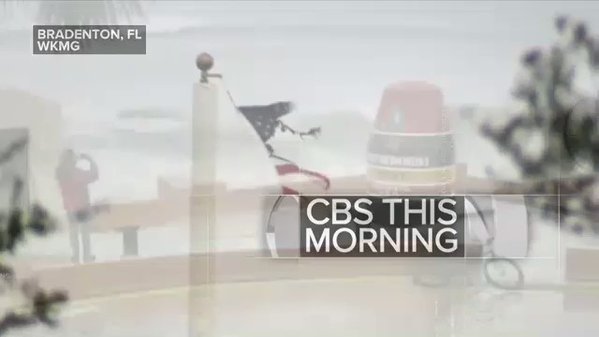HURRICANE SEASON: WHAT TO EXPECT THIS FALL
 Posted 9-11-17
Posted 9-11-17
THE ACTIVITY WE CAN EXPECT THIS YEAR, THE MAIN FACTORS IN THE YEAR’S BIGGEST STORMS, AND MORE, FROM SWELLWATCH FORECASTER NATHAN COOL
We’ve had a pretty slow Pacific hurricane season. If it’s slower in the Pacific, does that have any relationship to the Atlantic?
They usually flip-flop. There’s never really a best of both worlds. It’s always going to be stronger in either the Atlantic or the Pacific just because of how variables oscillate. You have a jet stream that’s riding at certain latitudes, for example. During El Niño seasons, the jet stream will drape across “Hurricane Alley” and it increases the vertical shear (a change in wind speed or direction with a change in latitude) when hurricanes are trying to form. It just keeps blowing the tops off all these hurricanes. When we have a neutral year or a La Niña year, though, just the opposite happens. When we don’t have such a strong vertical shear, we tend not to have the strength of the jet stream draped over Hurricane Alley.
During an El Niño year — which would be non-conducive to Atlantic hurricanes because of the vertical shear in the jet stream — we get warmer waters in the Pacific, which just fuels hurricanes and gives them a lot more guidance. One of the big blockers for Hurricanes in the NE Pacific is the cold water coming down. It keeps them from going further North than at Cabo latitudes. The waters aren’t all that normally warm off of the NE Pacific, so that’s why we’re not getting a whole lot of guidance and we’re also not getting a lot of strength out of the hurricanes that are forming there.
Would you say there has been a shift in the last decade as far as hurricane activity?
That’s kind of a tough call because there are so many factors that come into play. Obviously, climate change affects things, but that’s a whole different topic. If you have climate change, you have more frequent El Niños. That means you wouldn’t have many Atlantic hurricanes. You would have hurricanes elsewhere that would be stronger, which would mean more Pacific hurricanes. There are also things that just aren’t very well-known, like the loop current (a warm-ocean current that moves northward between Cuba and the Yucatán Peninsula), which sits in the Gulf of Mexico. For Hurricane Katrina, one of the things that helped the storm along was that loop current, a difficult variable to track. It all of a sudden lined up at just the right time, and the Bermuda High, out in the Atlantic, was helping to guide the storms coming off the African Easterly jet stream, guiding storms away from Africa and turning them cyclonic just north of the equator. All of these things lined up with warmer-than-normal waters and came together for the perfect storm. It’s hard to nail one thing down and say definitively that it means increased hurricane activity. With that said, it’s really affecting the Pacific more than the Atlantic. So, if we become more El Niño-like for a decade’s time, that means more hurricanes for the Pacific and fewer hurricanes in the Atlantic. Typhoons in the Western Pacific have been especially strong in the last few years.
We also have abnormally warm waters planet-wide. When we take a look at the Atlantic right now, the temperatures are high across where the African Easterly jet stream would reside. That means any storms coming off of Africa would eventually become cyclonic. In the Pacific, things have actually cooled down a little bit. They’re not below normal, but they’re not excessively warm, like when we had our El Niño a couple of years ago and we had a Pacific warming period that everyone was calling The Blob.
There’s a term that scientist Jared Diamond has called “landscape amnesia,’ where a giant change is accepted as normal when it happens slowly, over the course of many, many years. It’s hard to say, ‘I can remember back in the ’80s, and we had a certain number of hurricanes.’ or in the ’90s, or in the early 2000s. It’s somewhat anecdotal until you go into the data and take a look at the changes. Has there really been an increase? It’s a bit controversial. There isn’t anything that’s noticeable enough to say that there’s an excessive increase. We could just be in somewhat of a more positive cycle. There is so much that has to come together besides the warming waters — the positioning of all the lows and highs that come together for guidance and reduction of shear, and other weather-related factors like that.
How easy is it to predict today whether these hurricanes will make landfall?
Nowadays, the technology that the National Oceanic and Atmospheric Association [NOAA] uses is extremely good. Accounting for how they’ve improved the modeling of hurricanes over the last five years, it’s gotten pretty reliable, almost like artificial intelligence, where variables are plugged in to learn from what’s happened in years past in order to narrow down possible outcomes. NOAA is also taking less of a stochastic (randomly determined) approach in some of their climate models, which are increasing in accuracy along with their weather models. Over the last few years, almost every single hurricane was right on track with what NOAA had predicted.
As far as the rest of this season is looking, do you think we’ll see at least one or two more storms in the Atlantic?
The Atlantic is really going to go gangbusters for the rest of September and October. There’s no doubt about that. Everything is so prime across the board because the elements are all coming together. If we didn’t have a very active remaining hurricane season in September and October, I’d be surprised.

(C) Towsurfer.com 2017







